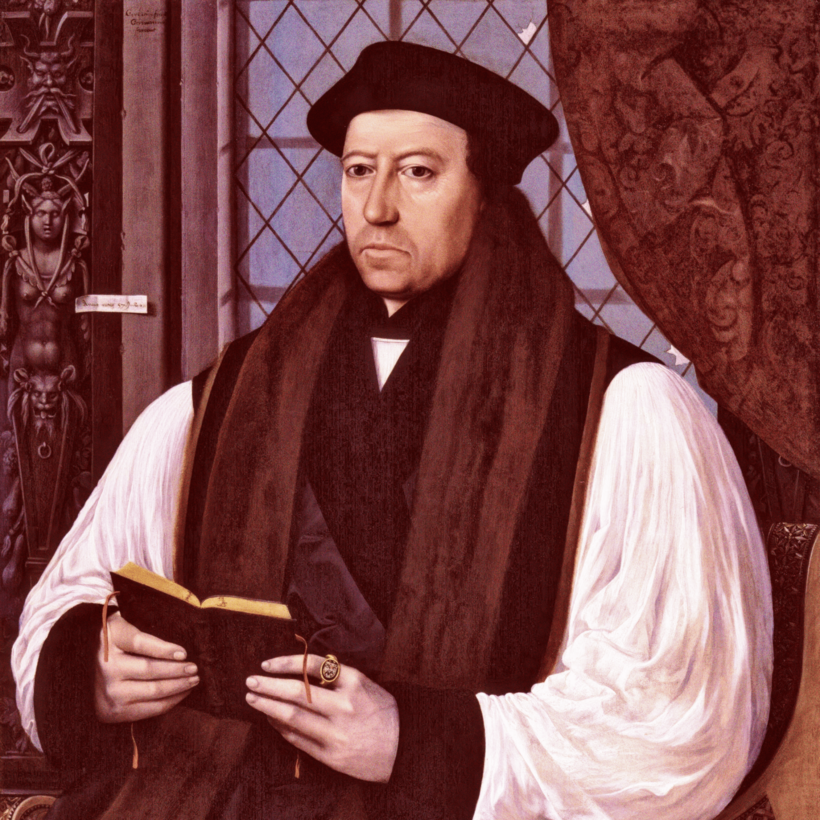Archbishop Thomas Cranmer is known for many things, but, surprisingly, not for his most influential act. In 1549, Cranmer completed The Book of Common Prayer, the all-English, Reformationist revision of the Roman Catholic church service. He kept the wedding rite that some Catholic service books had included for centuries, but tweaked it. His most important change was to add the words “to love and to cherish.” The words sound familiar today, but back then they broke with tradition.
Both professionally and personally, Cranmer’s life was all about marriage. After his first wife died during childbirth, he became a priest. In Nuremberg, in 1532, seeking doctrinal support for annulling King Henry VIII’s marriage to Catherine of Aragon, Cranmer envied Protestant clerics’ ability to marry. Even though he was a Catholic priest and forbidden from marrying, he secretly wed the niece of a theologian. Shortly after, he was surprised to be summoned to England to serve as Archbishop of Canterbury—a position that would make his marriage all the more scandalous.
He sneaked his new wife into England and lived in constant fear of exposure until clerical marriage was legalized, in 1549. Throughout his own married life, he refereed King Henry VIII’s endless marital nightmares—two marriages annulled, two wives beheaded.
For hundreds of years, wedding vows consisted of two brief sets of promises made in a very long ceremony. The first is often called the “consent.” Its purpose is to ensure that couples are freely choosing marriage and know what it entails. The officiant or priest asks: Will you love, honor, and keep each other, forsaking all others, as long as you live? The second is the “marrying sentence.” To quote a portion of the 16th-century version: to have and to holde from this day forwarde, for better, for wurse, for richer, for poorer, in sickenes, and in health, to love and to cherishe…
The word “love” had long been in the consent, so why did Cranmer repeat it in the marrying sentence? I believe he wanted to guarantee that the right kind of love was promised and understood to be the essence of a marriage. So he paired “love” with “cherish” and put it into the sentence that creates it.
The old Church scripts for the vows gave the marrying sentence in English but the consents in Latin. The Latin word that got translated as “love” was diligere, which meant something like “esteem,” the kind of love you could have for a favorite teacher. It seems that Cranmer, looking at the Latin, thought that the rite should be clearer on what kind of love marriage called for.
Cranmer’s “cherish” adds tenderness and physicality to marital love, with their implicit tie to sexuality. In his day, “cherish” had a physical connotation that it has since lost. In 1514, after you unsaddled your horse, you might cherish it, meaning pet or stroke it.
By making tender love essential in marriage, Cranmer also made marriage modern. Loveless vows became false ones that risked divine punishment. This gave men and women a right and a duty to refuse to marry someone they didn’t cherish. It was a subtle lesson in making choices. In the long run, Cranmer’s tweaks to the rite made marriage a possibility of freedom.
Cheryl Mendelson is the author of several books, including Anything for Jane and Love, Work, Children

